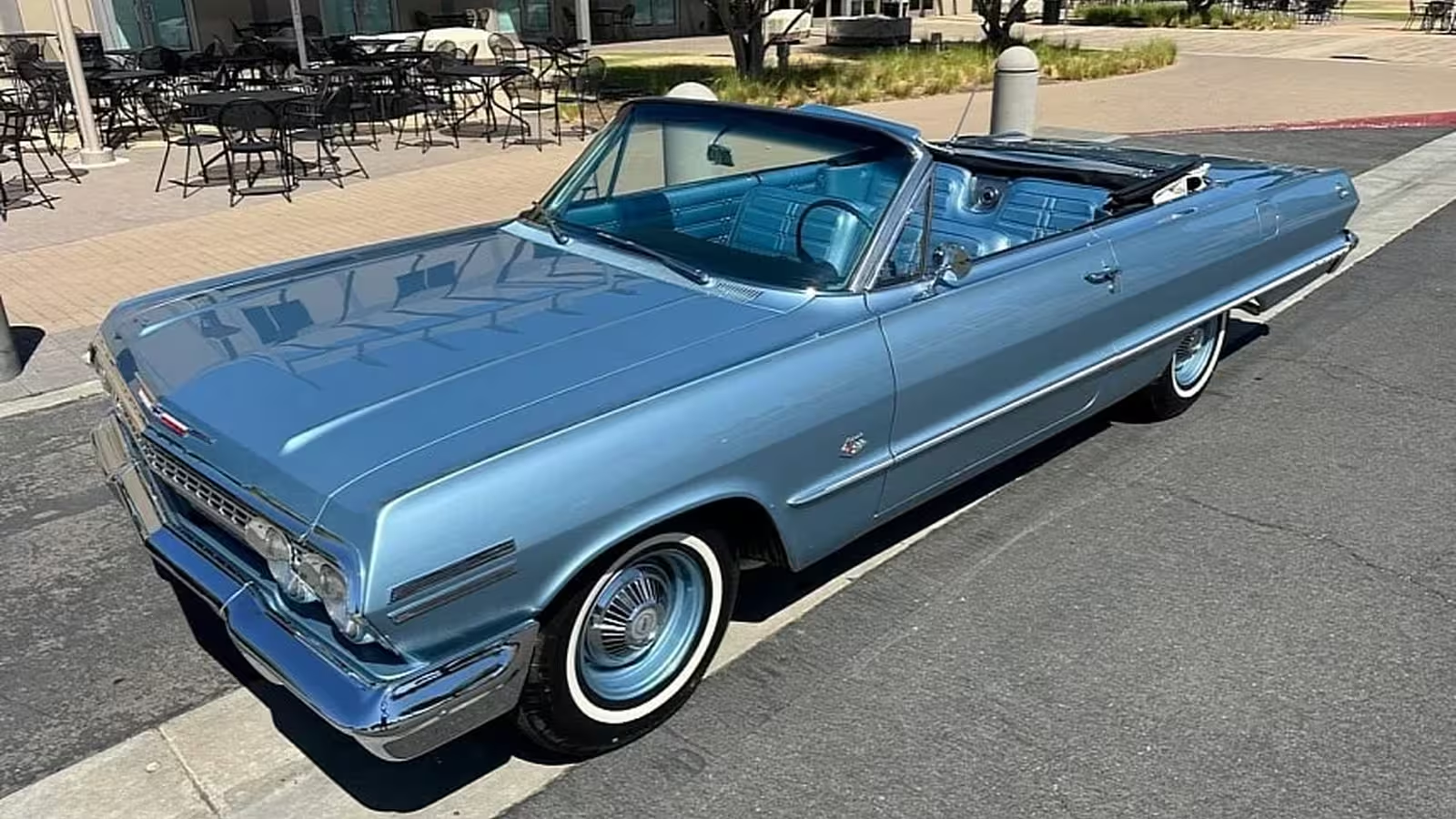6 Minutes
A Legend is Born: The Rise of the Chevrolet Impala
Since its debut in 1958, the Chevrolet Impala has stood as an emblem of American automotive excellence. Named after the swift African antelope, the Impala rapidly evolved from a prestigious Bel Air trim to Chevrolet's flagship full-size model. By 1963, the Impala had already secured its reputation as America's go-to for style, performance, and mainstream popularity—with over 832,000 units manufactured that year alone.
The Super Sport (SS) Badge: More Than Just Looks
Introduced in 1961, the Super Sport or SS package elevated the Impala to muscle car royalty. While just 453 SS-equipped Impalas hit the roads initially, their focus was clear: performance. By 1962, the SS had transformed into its own sub-series, available as both coupes and convertibles. This performance-oriented trim quickly gained a loyal following, turning a full-size Chevy into a legitimate street contender.
Performance Upgrades That Changed the Game
For a modest price of just $53.80, the SS kit included not just flashy aesthetics like spinner hubcaps, distinctive badging, engine-turned rear trim, and bucket seats with a center console. The real magic was under the skin, where upgraded suspension with stiffer springs and firmer shocks dramatically improved handling. Power steering and brakes, metallic brake linings, column-mounted tachometer, and a famous passenger grab bar completed the package, ensuring the SS was as capable as it looked.
The 409 V8: Birth of a Muscle Icon
Chevrolet set the stage for big-block excellence with the 348 V8 in 1958, but the 409-cubic-inch V8 truly redefined expectations. First introduced with the SS in 1961, this Turbo Fire V8 debuted with 360 horsepower, thanks to a single Carter AFB four-barrel carburetor, solid lifters, a forged steel crank, and wedge-shaped combustion chambers. The aggressive 11.25:1 compression ratio meant only one transmission mattered: the four-speed manual.
In 1962, the 409 received an upgrade—dual quad carburetors boosted output to an even 409 horsepower, a legendary figure amongst classic muscle car enthusiasts. Production of Super Sport models soared past 99,000 in 1962, showcasing the rising demand for V8 muscle power. By 1963, coupe and convertible SS models were available, but only a handful were equipped with the sought-after 409 engine and four-speed manual transmission.
Ultra-Rare by the Numbers
Out of 16,902 Chevrolets fitted with the 409 in 1963, only about 1,200 Impalas sported the coveted 409/four-speed combination. The featured Silver-Blue convertible isn't just rare—it's a near-unicorn among classic Chevrolets. That year, the 409 was available in three versions: a 340-horsepower hydraulic cam setup, a 400-horsepower solid cam with single carb, and the top-tier 425-horsepower dual quad configuration.
Although the 409 engine continued as a power option in 1964 (with 400 and 425 hp variants), it would be phased out in 1965 when the 396 big-block took the spotlight. Only 2,828 409s were built in the engine's final year, emphasizing the rarity of early 1960s 409-powered Impalas.
Vehicle Specifications: What Makes This Impala SS Unique
The Impala SS showcased here is confirmed by Corvette Mike, the selling dealer, as a numbers-matching convertible from the respected Don Fezell Collection. Under the hood is a factory-correct 409 big-block V8 measuring 340 horsepower, mated to a desirable four-speed manual gearbox. The car features power steering and brakes, a Posi-Traction rear end for improved traction, and a power-operated convertible top.
Aesthetically, the iconic Silver-Blue exterior glistens over a matching blue interior, complementing the SS's timeless lines. The convertible mechanism operates smoothly, just as Chevrolet intended, and the car's documented originality adds distinctive value for collectors.
Design & Interior
Step inside and you’ll be greeted by a meticulously restored blue cabin complete with the SS-exclusive bucket seats and center console. The instrument cluster, sporting the period-correct column-mounted tachometer, keeps the driver in command. Chrome accents and unique SS badging evoke the muscle era’s character, while materials and fitment showcase Chevrolet's commitment to luxury and flair.
Performance on the Road
Thanks to the legendary 409 V8 and its four-speed manual, this Impala SS delivers an exhilarating driving experience rare for cars of its size. With robust torque, responsive throttle, and the engaging feel of a classic muscle car clutch and shifter, every mile is memorable. The upgraded suspension and power-assisted features make for a surprisingly agile and comfortable ride, blending brute force with grand touring comfort.
Market Rarity and Value
With only 54,524 miles on the odometer and a documented history, this 1963 Chevrolet Impala SS convertible sits at the very top of classic car wish lists. Vehicles of this caliber regularly fetch six-figure sums in today's collectible car market. In November 2024, a similarly equipped Impala changed hands for $110,000 at auction, with the total transaction cost approaching $121,000 after buyer’s premium and taxes.
The Don Fezell Legacy
Previous owner Don Fezell is a name that resonates with American muscle car historians. A Pennsylvania-based collector and racer, Fezell was renowned for owning some of the most original, high-performance machines from the muscle era, including multiple Z-11 Impalas, Camaros, Cobra Jets, Thunderbolts, factory Mopar lightweights, and Pontiac Super Duties. His cars were known for authenticity and originality—in large part responsible for driving up the value and appreciation of well-preserved, unrestored muscle cars.
Although much of Fezell’s collection crossed the Mecum auction block in 2017, this exceptional Impala remained a standout piece. Today, every factory-correct muscle car that survives acts as a rolling tribute to collectors like Fezell who recognized their value and cultural significance.
Comparisons and Final Thoughts
Among classic full-size muscle cars, the 1963 Chevrolet Impala SS convertible with a 409 V8 and four-speed manual stands out for its blend of power, luxury, and limited production. Comparable GM offerings of the era, like the Pontiac Grand Prix or Buick Wildcat, couldn't match the Impala's perfect storm of prestige and performance. In terms of American muscle legacy, only the rarest Mopars or Ford’s performance Galaxies could rival its desirability in collectors’ eyes.
The 1963 Impala SS remains a benchmark for what the golden age of Detroit muscle could produce: a full-size, comfort-laden convertible capable of embarrassing sports cars at the drag strip. For those searching for an icon that defines both the look and the soul of 1960s American motoring, few vehicles can rival this rare super sport classic.
Source: autoevolution



Comments